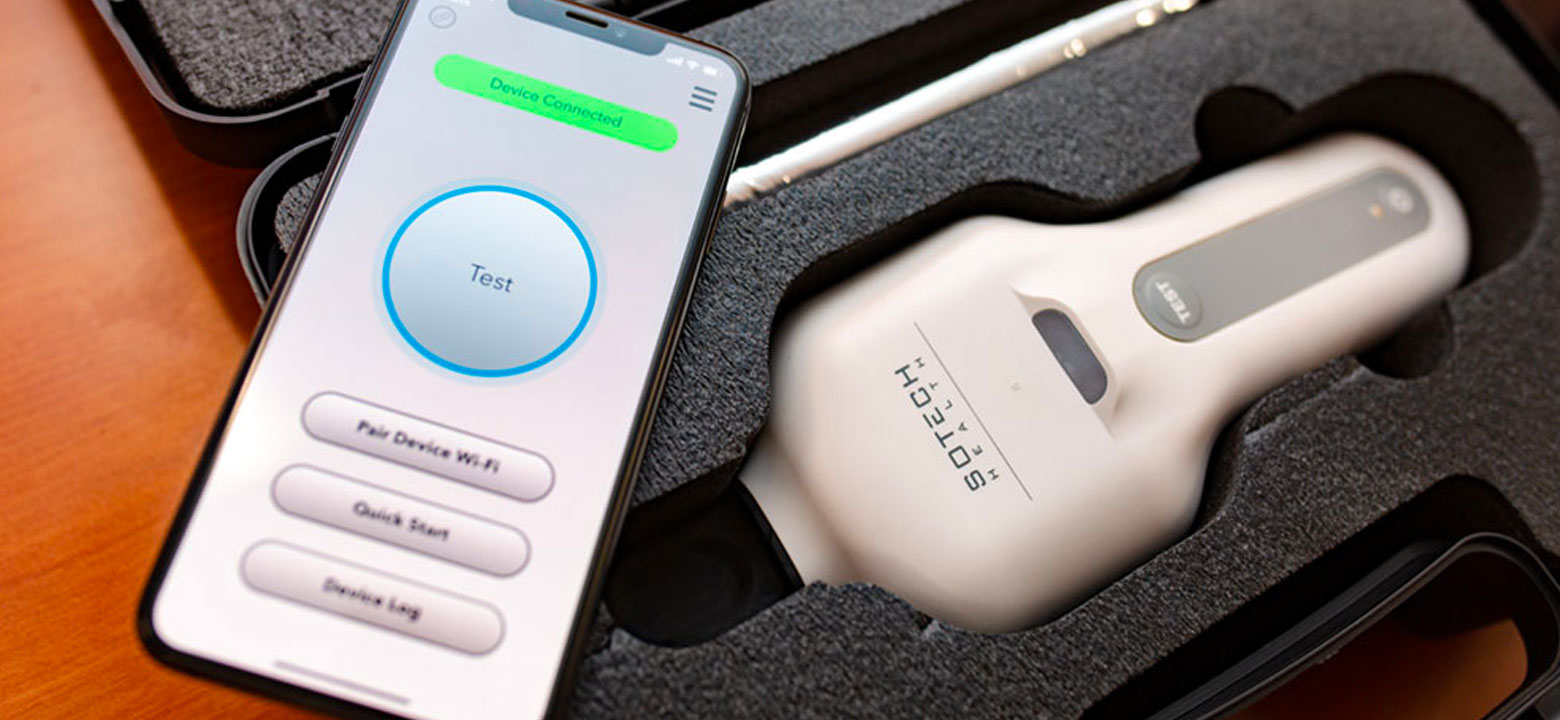
Ever since the SARS-CoV-2 virus appeared, tests have been limited by speed, availability, accuracy, and the difficulty inherent in obtaining a good sample. Nasal swabs can be uncomfortable, and many people don't place them far enough in the nostril or swab for a long enough period of time. There's also varying opinions on whether throat swabbing should be part of the collection procedure or not. Self-tests are almost always performed by people who aren't experienced in collecting samples, further increasing the risk of inaccurate results. When you add the fact that asymptomatic people may not even think to test themselves, you can see where COVID testing faces a lot of challenges.
As more knowledge emerges, new strains mutate, and collection and testing technology improves, scientists are developing better and better ways to check for COVID. A new breath sensor may be able to provide results quickly, accurately, and more consistently than other available rapid tests.
The idea of detecting an illness using exhaled air isn't new. For centuries, certain metabolic issues have been known to produce noticeable changes in the breath. Even diseases that aren't metabolic in nature often have a unique chemical “signature” that can be detected in exhaled breaths.
This means that researchers actually have two ways to pick up on the presence of the SARS-CoV-2 virus and its variants. Since it's a respiratory illness transmitted by exhaled droplets, one method could check for the presence of the virus itself. Another could check for something else entirely: chemical markers for the body's response to the virus. These markers are volatile organic compounds, or VOCs. VOCs are often aromatic, but may be present in amounts too small for even the most sensitive nose to detect. Fortunately, chemical sensors can do the trick.
The sensor technology for picking up on COVID infections is relatively new, but very promising. It's been in development since 2021, by a variety of institutions. One such device was put forth by SOTECH Health in collaboration with the University of Texas at Dallas. Their device scans a sample of the breath for the presence of a certain VOC signature consistent with a COVID infection, which can show up regardless of whether or not someone is exhibiting symptoms. The test isn't designed to be diagnostic—instead, it's a screening device that can alert people that they need a PCR test for confirmation, and collect data to create better models of how COVID spreads through the population.
Another device, created by RMIT University and biomedical start-up Soterius, relies on detecting viral particles. This company has created a device small enough to fit on a key fob, which uses nanotech biosensors created by RMIT that selectively bind to certain viruses. This helps reduce the risk of false positives, while still detecting the disease in asymptomatic people. This fob could be combined with security technology, requiring people to test negative for COVID before entering a building. If they test positive, the device cautions them to quarantine and seek further testing.
Right now, rapid antigen tests rely on nasal swabs. As was mentioned above, this poses several challenges when it comes to sample collection and testing. Though the tests are designed to be as sensitive and empirical as they can be, given the circumstances, it's still possible for people to get false negatives if they swab improperly, don't mix the testing solution properly, or don't wait the requisite amount of time for the results to appear. Asymptomatic people may not even think to test themselves, which means that these tests can miss an entire potential viral reservoir. Since nasal and throat swabbing is uncomfortable, even people with mild COVID symptoms may avoid testing themselves.
Breath sensors, by contrast, are faster and easier to use. All the user needs to do is exhale, so there's no discomfort. They can also submit data to the cloud, where it can be aggregated into a clearer, more accurate picture of how well the virus is being contained. When you compare the two, people are much more likely to use a simple breath test over a complicated, uncomfortable, often messy swab, and there are likely to be fewer issues with proper sample collection and testing technique.
Soterius' biosensor, the Soterius Scout, is seeking investors and business inquiries. The technology is most likely going to be deployed in hospitals and care facilities first, to protect and monitor employees and patients alike.
SOTECH Health, meanwhile, has partnered with Philips-Medisize to speed up the development and production of their breath sensor. While it isn't yet known when their device will be available to purchase, Philips-Medisize is gearing up their production facilities to meet the anticipated demand.
One of the biggest obstacles to successfully containing COVID has always been testing. In a disease that can produce catastrophic illness in some, and virtually nothing in others, detecting potential reservoirs for the mutation and transmission of new viral strains is very challenging. By combining nanotechnology and biosensors, breath sensors present a new, improved way to quickly, easily, and reliably detect COVID infections.